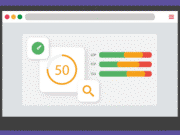Your blog is not just a piece of content but it is the documented form of your hard work and knowledge, and if it doesn’t reach the audience or if no one is reading it or appreciating it, then all your efforts go into vain. Also, mostly blogging is done to generate revenue but without the inflow of traffic, even the objective of monetizing fails to materialize. So, precisely the whole purpose of blogging is to get traffic, that too organic traffic.
If you have just started blogging and wondering why you are not getting traffic, then perhaps it’s too early to get the fruit of your hard work. It doesn’t happen overnight; patience and persistence are the keys to unlock the influx of heavy footprints on your blog posts. But if it has been a while and you have created around 30-40 posts and yet the traffic is not increasing, then there might be something that you are doing wrong and thus driving traffic away from your blog.
While blogging, often, the blogger’s focus is so much directed towards doing the obvious things the right way that the writer forgets to keep a check on what is getting neglected. As a blogger, you must be leaving no stone unturned for enhancing your content quality. You must be searching for trending topics, brainstorming to create quality content, putting the best of your writing skills, grammar and language right on point, taking care of plagiarism, but if you are yet not receiving traffic, then probably you are going wrong in the following ways.
Quality of content is the foundation but to drive huge traffic, a lot of other things need to be taken care of:
1. Search Engine Optimization

As a blogger, it is expected from you that you do have a basic understanding of how SEO works because that is the single most capable source that can give you organic traffic much more than all other sources combined, such as direct, referral, social, email and others.
If you have not focused on your On-Page SEO and On-Site SEO, then you are not giving Google any reason to send off the traffic.
Recommended for you: SEO Tactics: The Best Ways to Double Your Search Traffic in 2020.
On-page SEO
 On-page SEO means to make a single blog post-keyword-targeted so that it becomes SEO-optimized to drive more traffic. For this, you need to focus on the headings, keyword placement and content quality from the SEO perspective.
On-page SEO means to make a single blog post-keyword-targeted so that it becomes SEO-optimized to drive more traffic. For this, you need to focus on the headings, keyword placement and content quality from the SEO perspective.
- Use the targeted keyword at least anywhere in the title.
- Keep the length of the title below 65 characters.
- Do not repeat the same keyword more than once in the title tag (In WordPress, the title tag is set at H1).
- For sub-headings, use H2 and H3 tags.
- Use the targeted keyword in the URL and avoid using commas, brackets, special characters, symbols, etc. Use only dashes to separate the words to structure your URL.
- Although there is no magic formula, yet keep keyword density at around 1.5%.
- Use the keyword in the first para and last para. In the body of content use it sensibly and avoid forced insertion of keywords.
- Add a relevant image to your blog and use keywords in the “image alt text” and the “image title”.
- Do internal linking in your blog post by placing links to other related posts from your blog.
- You can also do external linking to other trusted websites such as Wikipedia, or CNN. This is also a good practice.
On-site SEO
 On-site SEO is a little complex as it refers to the optimization of the entire website, but you can try WordPress’s Yoast SEO, a simple plugin that takes care of on-site SEO, to make things easier for you.
On-site SEO is a little complex as it refers to the optimization of the entire website, but you can try WordPress’s Yoast SEO, a simple plugin that takes care of on-site SEO, to make things easier for you.
Getting handy with SEO will require little practice, but it’s worth it as it can do wonders for your traffic game.
2. Focus on Having Subscribers

When you get a visitor on your page, you gotta give him some reason to come back to you again. Unless you are an e-commerce site or already a popular blogger with your pages getting bookmarked, there is very minimal to zero chances that a visitor will revisit your blog. On a single visit, the reader may not even bother to check your domain’s name, forget about recalling it to revisit.
So, when you get a visitor, consider him precious and try to convert him to a subscriber. That way you can directly inform him each time you make a new blog post and invite him to revisit your blog. You can get this done through Email Marketing and Push Notification.
Email Marketing
 While SEO takes care of new organic traffic, email marketing can be best utilized for getting traffic from your subscribers. Add an email newsletter subscription box on your blog and ask your visitors to be your subscriber.
While SEO takes care of new organic traffic, email marketing can be best utilized for getting traffic from your subscribers. Add an email newsletter subscription box on your blog and ask your visitors to be your subscriber.
If they subscribe, then you can send them newsletters at regular intervals and ask them to revisit your blog, or you can even engage with them through a quiz and all. To handle the automation part, there are tools like Convertkit, Jetpack email subscription feature, etc.
Push Notification
 Use push notification to ask your readers to subscribe to your blog updates. Then you can use services like PushEngage to send them a notification every time you publish a new blog post.
Use push notification to ask your readers to subscribe to your blog updates. Then you can use services like PushEngage to send them a notification every time you publish a new blog post.
Not just it helps with new posts, but the automation feature of such services will automate the engagement part by strategically sending your pre-existing posts to your new subscribers at a regular interval. Even WordPress has a plugin to automate almost everything around push notification.
You may like: Successful Blogging isn’t just Your Opinion, it’s Scientific.
3. Run Contests

When you go window shopping, don’t you get attracted to the shop with banners of ‘Sale’ or ‘Discount’ and feel like checking it once. That’s bribing but it works. You can bribe your readers to visit your page by conducting a contest in your blogs.
That’s an engaging activity but of course, there have to be some giveaways. Once in a while, you can afford to do that if you are serious about your blogging as a revenue-generating career.
4. Social Media

If you have written a good piece, which you believe will be helpful for the readers, then you gotta tell them about it. So, blowing the trumpet is important. Do maximum sharing through social media platforms, mainly Twitter and Facebook:
 Every blog should have a Facebook fan page, so create a fan page. It will be a medium through which your readers connect with your blog as a brand. It will help you build a healthy community which you can direct to your blog (website).
Every blog should have a Facebook fan page, so create a fan page. It will be a medium through which your readers connect with your blog as a brand. It will help you build a healthy community which you can direct to your blog (website).
Posting your blog on Facebook will not just keep your regular readers notified but through share option, it can reach out to new prospects thus skyrocketing your traffic. But on Facebook, engagement matters. So, having a lot of “fans” is not enough, the audience must engage through like, comment, and share. But since the Facebook organic reach is declining, so you can try out the following:
- Use Facebook messenger bots so your visitors subscribe to your Fan Page. Once they subscribe you can send them articles, News, deals, offers, actionable content and drive traffic. A few platforms to build Messenger bots are MobileMonkey, Chatfuel, Manychat, etc. Most of them offer a free plan to 1000 subscribers, making it easy for you to test.
- Make your fan page attractive by writing a good introduction, finding a custom user name and don’t forget to add your blog’s URL in the about section.
- Utilize the Facebook cover page to promote your page through a 12-second video. It is an effective and crisp way of describing your page. For making the video, you can use tools like Animatron Facebook cover video maker.
- To go viral, you need to work on engagement, so be active and keep your page running. To automate the process of publishing, you can try out tools like AgoraPulse or PostPlanner.
 Twitter has huge potential to drive traffic your way, so a blogger must become active on twitter. Keep your profile updated with your short author bio, header image & avatar. Make sure to tweet at least once every day, and don’t forget to use a hashtag (#).
Twitter has huge potential to drive traffic your way, so a blogger must become active on twitter. Keep your profile updated with your short author bio, header image & avatar. Make sure to tweet at least once every day, and don’t forget to use a hashtag (#).
Being regular is important! Use an analyzer software/tool to find the current trending topics, tweet around it or retweet from other bloggers. Always share your blog with an image.
5. Be Consistent

All these tricks to drive traffic to your blog will fail if you are not consistent with your blogging. Publishing a blog post once in a while when your mood feels like writing will not help you with traffic. Remember, magazines are weekly or monthly publications and newspapers are daily publications.
Consistency in your publishing is very important for driving traffic. To do SEO, or for email marketing or social media sharing, for everything you need to have a sequence for your readers. That can be created only when you are consistent with your blogging.
You may also like: Top 5 Local SEO Strategies to Increase Your Traffic.
Conclusion

Whether you have already started blogging or you are planning to start a blog, apart from honing your writing skills, you must equally focus on how to drive traffic. When it comes to blogging, the content will always be the king; but not doing the above-mentioned things around your blog can be the major reason why traffic is driving away.
So, if you are facing the traffic issue, try incorporating the changes mentioned above and check if you see any impact. However, these are well-proven techniques practiced by popular bloggers around every niche.
This article is written by Bhupendra Choudhary. Bhupendra is the business head of FieldCircle - a leading field service management software company. He has extensive experience in providing apt business solutions for field service and field sales domain through field sales management software.
 This article is written by Bhupendra Choudhary. Bhupendra is the business head of
This article is written by Bhupendra Choudhary. Bhupendra is the business head of 




